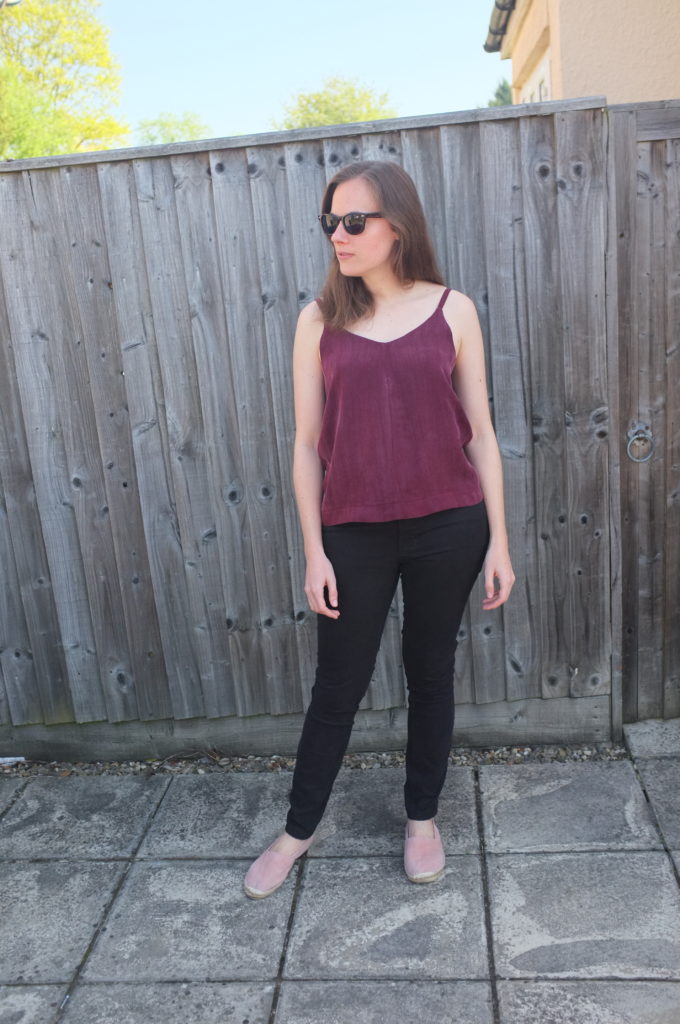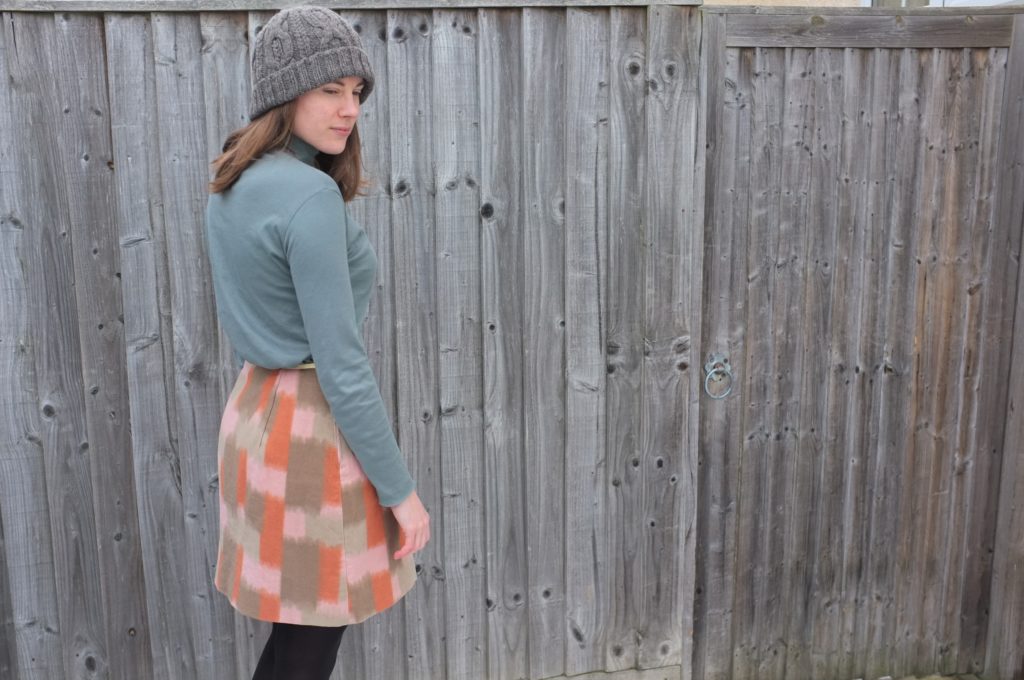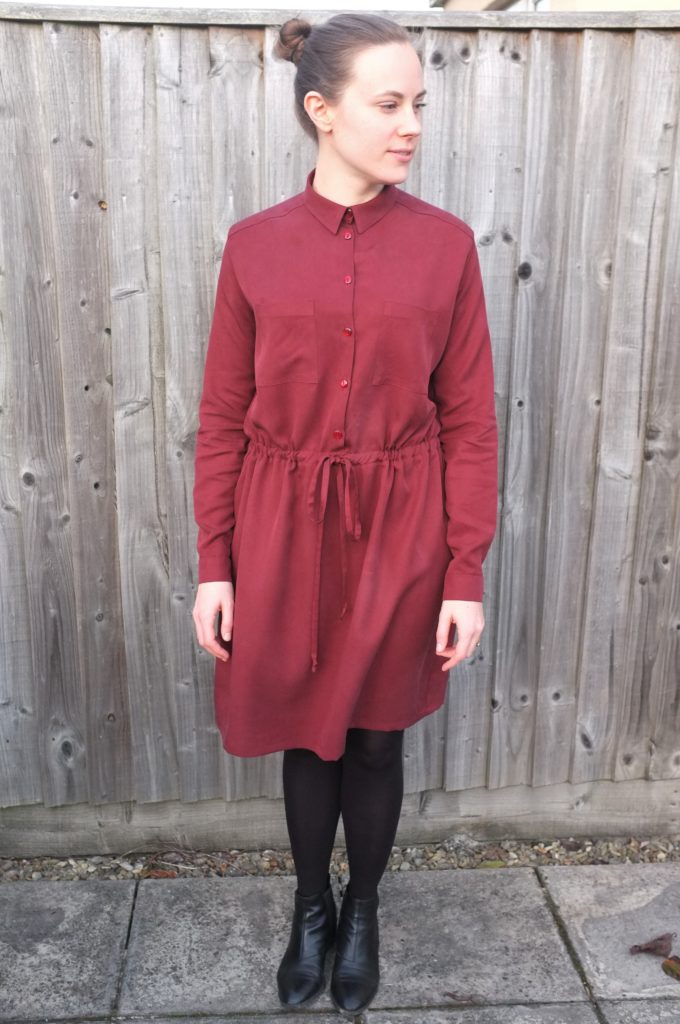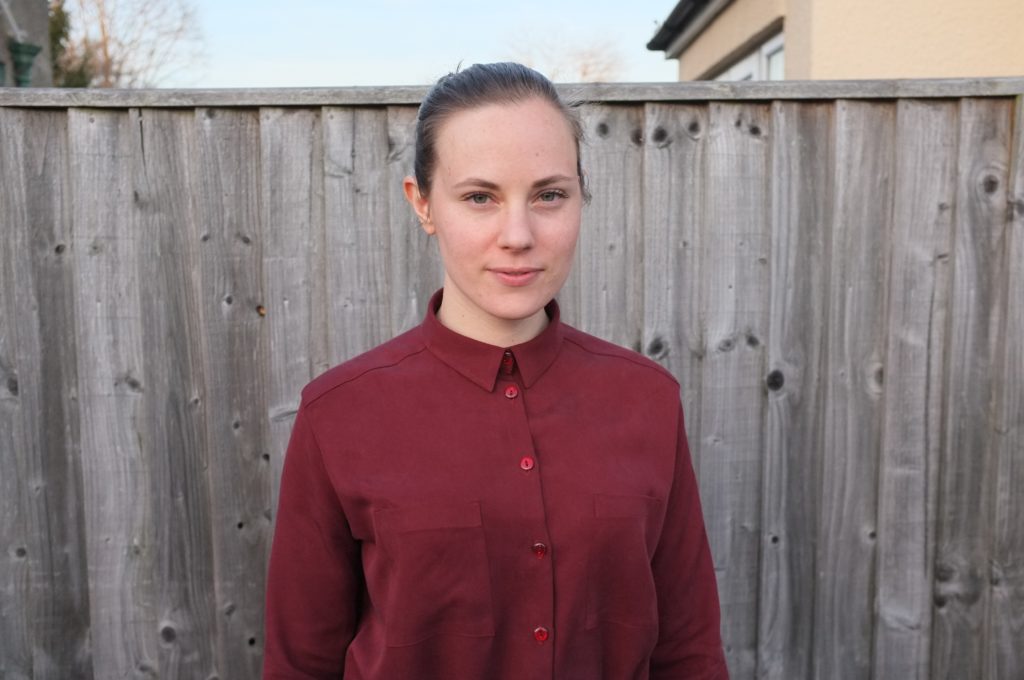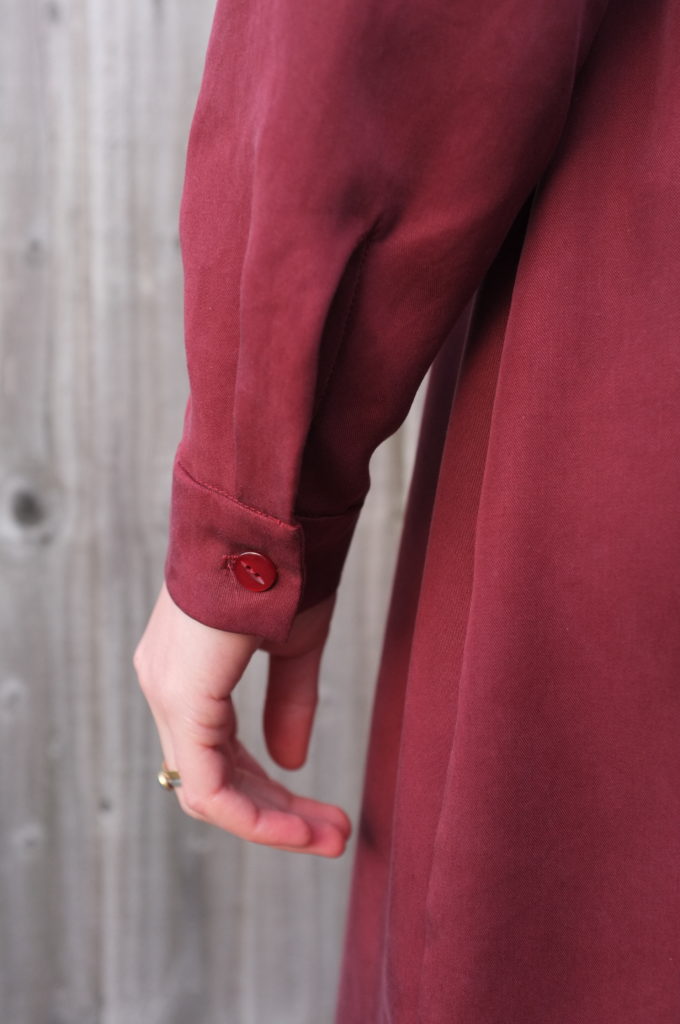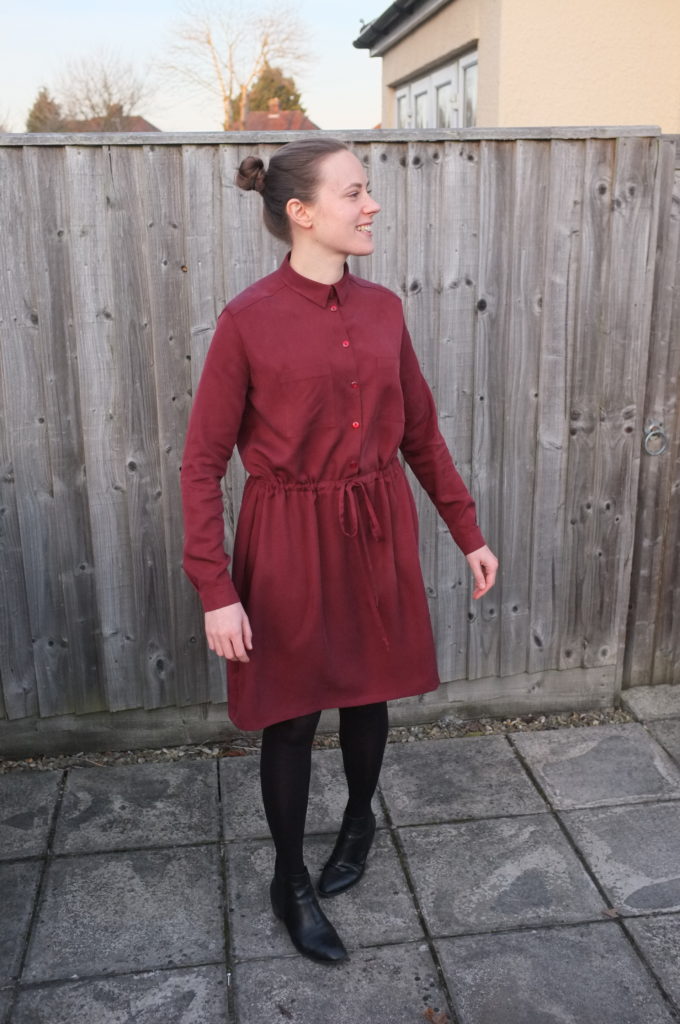Hi everyone. I can’t believe we still had snow when we took the pictures for my last post. Since then we’ve already had two heat waves and spring is finally and truly here. I’m so excited! My sewing list for spring and summer is super long and I have already 4 projects cut out and ready to go. Now to find the time to sew them.
Before diving into frivolous summer sewing I made sure to fit a sensible project in first. One of the things in my wardrobe that I wear to death are black skinny jeans. The two that I own are not black anymore and I’m just waiting for them to fall apart. I have been looking for a new pair in the shops for ages, but I can’t find anything that works with my hip/waist ratio. True black stretch denim, however, isn’t easy to find either. So when I saw that Fabric Godmother offered some Super Black Super Stretch Denim I immediately ordered some. The fabric when it arrived was not as stretchy as expected, though still suitable for skinny jeans. For the pattern I went with my trusted Closet Case Pattern Ginger Jeans in a medium to high rise (I amended the rise for my second pair and have stuck with it for my third and fourth). As in my previous versions I used the pocket stay version, which keeps everything nicely together. The legs are slimmed down from the straight leg version as much as comfortable, making sure I would be able to still get the leg opening over my foot. Most of the construction was straight forward (by now I’m very familiar with all the steps) the only hick-up were the back pockets. With this stretchy fabric I made sure to pin the back pockets over a tailor’s ham but when I tried them on, they were still too tight and digging in. The second attempt then was too loose and they were sticking out. I finally managed to get them right on the third go but I’m wondering if there is an easier way of doing it. Any tips?
The final jeans definitely fill a gap in my wardrobe, though they are not quite perfect. There is some pulling/wrinkling at the front pockets and the back yoke and the jeans zip that I used is super chunky so the front doesn’t lie flat properly. Then there is the twisting of the leg, which I wasn’t able to get rid of by alternating the direction of the front and the back leg (which I thought I did). Finally, though not surprising with black fabric, these jeans attract lint like crazy (and are impossible to photograph). Still, I’m sure they will prove very useful and I’m glad that I ticked them off my list.

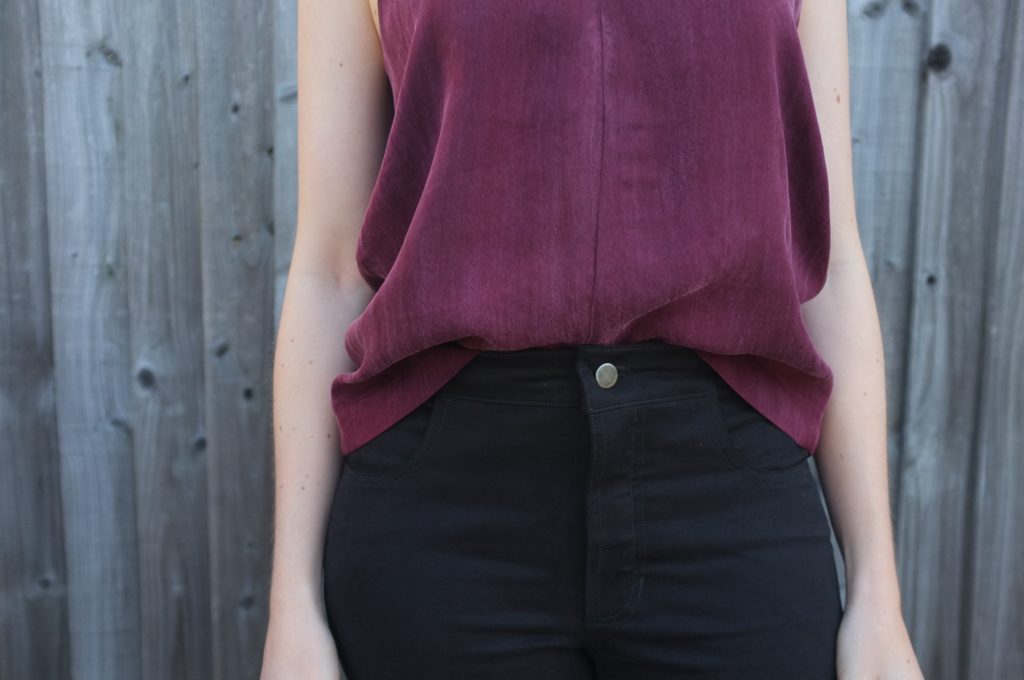
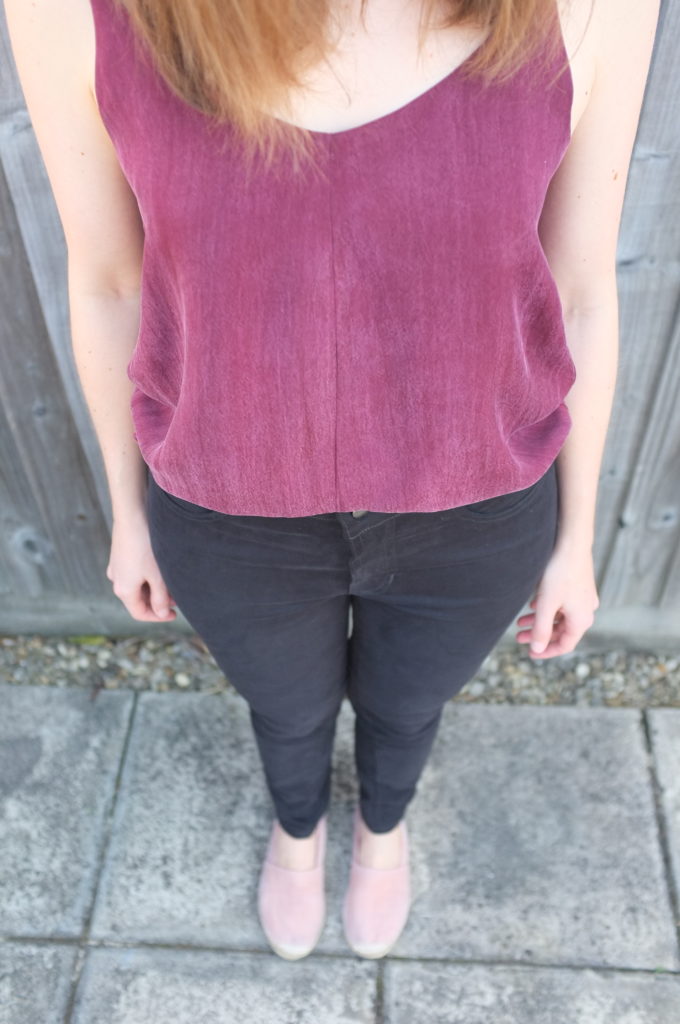
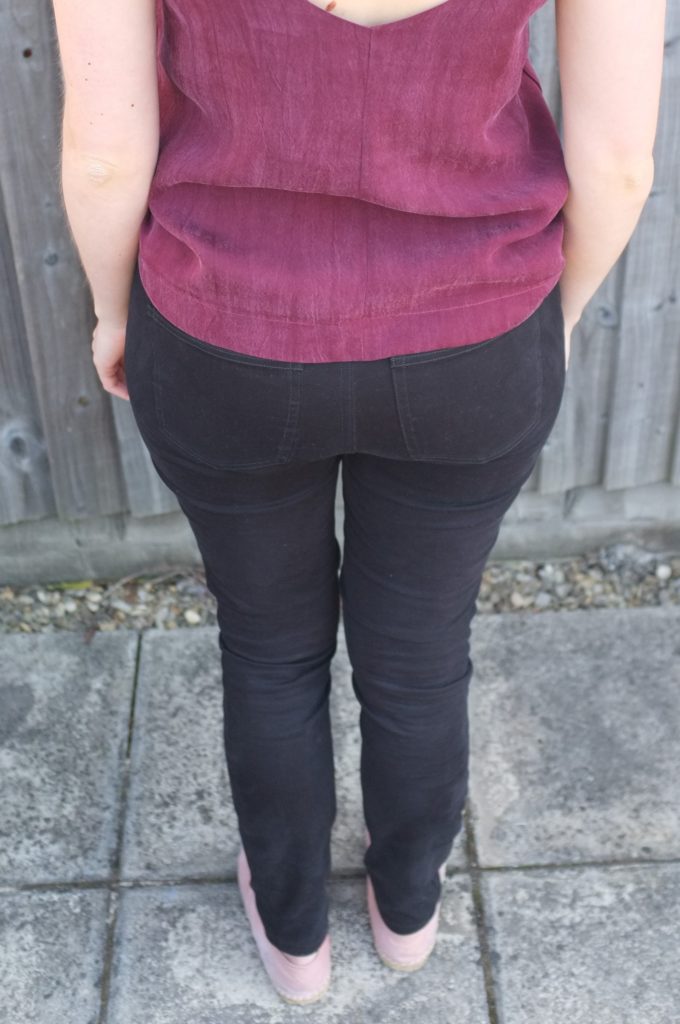
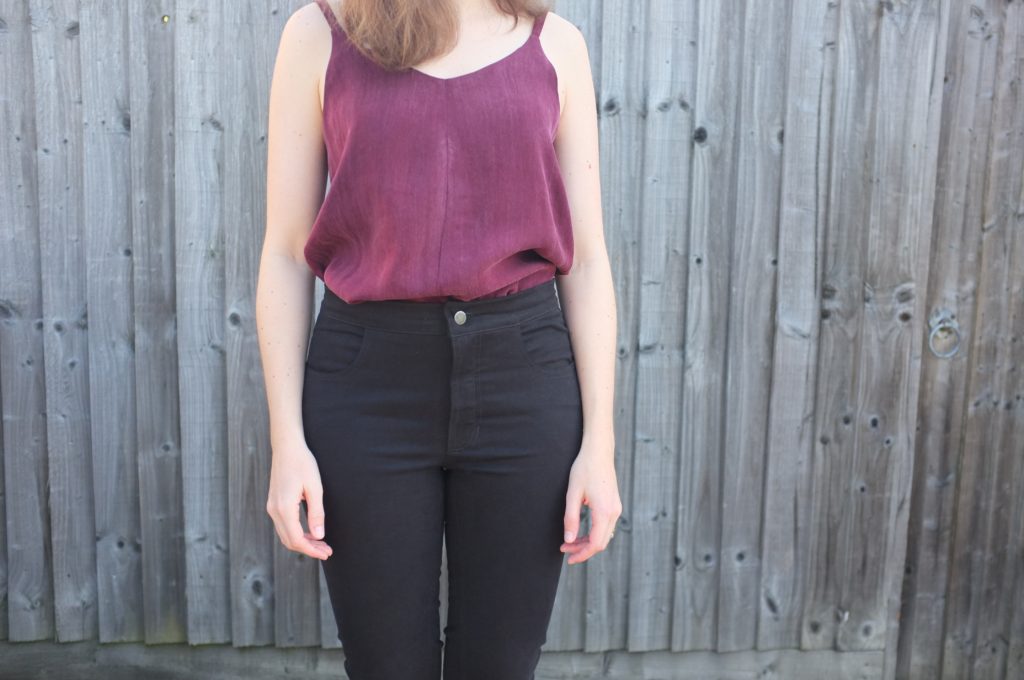
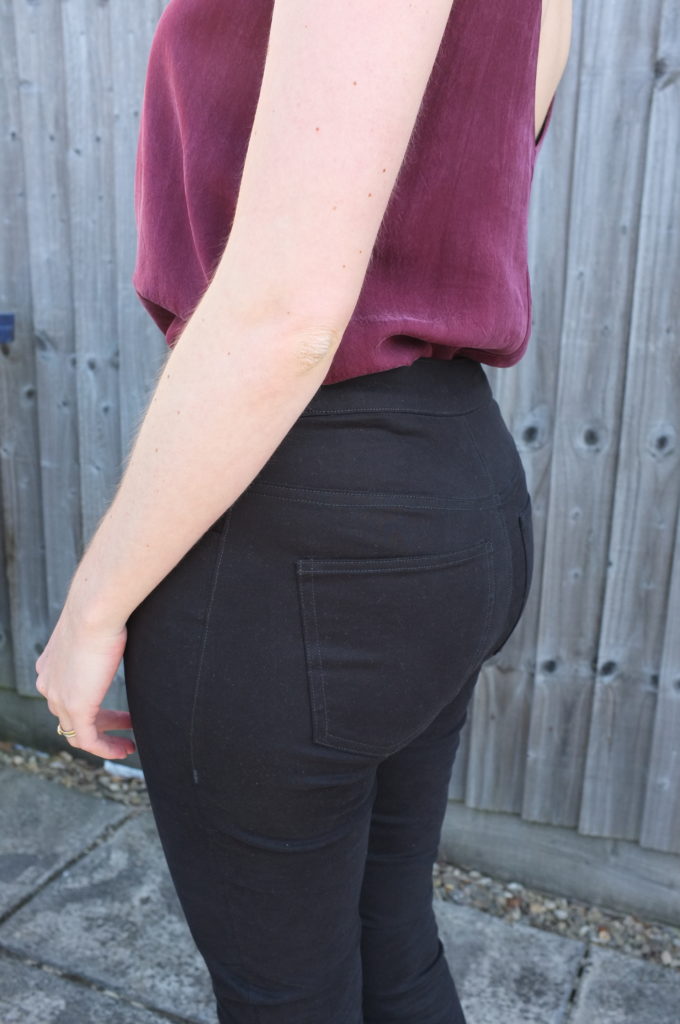 I’ve paired the jeans here with my espadrilles (a summer favourite, though I almost ruined them in a swamp excursion to see snake’s head frittilaria) and a new Ogden Cami. This cami started out as an 80s jumpsuit that I picked up at a flea market maybe 7 years ago. It was a double breasted jumpsuit in shorts length, which I could not pull off (I wish I had photos!) so I turned it into a slightly more wearable shirt dress. That got worn a couple of times but was still a bit too retro for my taste. It then recently ended up in the donation pile but got rescued in the last minute since I could not let go of this perfect sand-washed cupro. To squeeze it out I had to be creative with the centre front and back seams; also the length is slightly shorter than the original pattern but that actually works better for my short torso. The hem is preserved from the original garment. I made a straight size 6, as for my last version of that pattern, and it turned out really nicely. It’s the perfect little summer top.
I’ve paired the jeans here with my espadrilles (a summer favourite, though I almost ruined them in a swamp excursion to see snake’s head frittilaria) and a new Ogden Cami. This cami started out as an 80s jumpsuit that I picked up at a flea market maybe 7 years ago. It was a double breasted jumpsuit in shorts length, which I could not pull off (I wish I had photos!) so I turned it into a slightly more wearable shirt dress. That got worn a couple of times but was still a bit too retro for my taste. It then recently ended up in the donation pile but got rescued in the last minute since I could not let go of this perfect sand-washed cupro. To squeeze it out I had to be creative with the centre front and back seams; also the length is slightly shorter than the original pattern but that actually works better for my short torso. The hem is preserved from the original garment. I made a straight size 6, as for my last version of that pattern, and it turned out really nicely. It’s the perfect little summer top.
I can’t wait to sew some more summer things. I’m super inspired by all the recent Me Made May posts!



